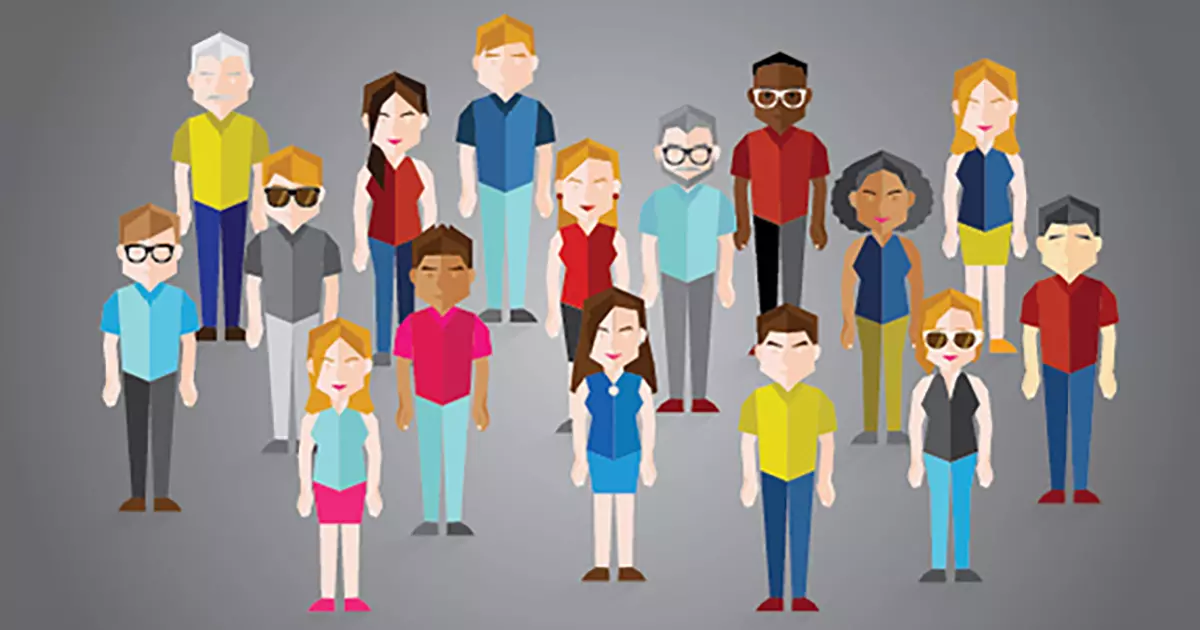Recycling B2B Personas: The Dangers in Re-using and Not Researching

Have you been re-using the same static personas for all your marketing? Learn how recycling without research can lead you down the wrong marketing path.
Personas have become a widely used way to represent users in B2B marketing, sales and design processes. This is great in theory as it puts a focus on the customer, but the reality is that B2B organizations often use the same static personas over and over, sometimes for years, when they are inaccurate and outdated. This continuous recycling of personas for all projects regardless of the marketing challenge is dangerous: It can lead marketers down the wrong path, wasting money and resources.
When used correctly, personas can be extremely powerful and elicit customer empathy. Great personas can prompt inspiration and lead to better solutions. Bad personas are shallow and fluffy (or worst of all fictional), and lead to bad decisions. The ubiquitous nature of personas means more B2B companies have real personas, but too often they are seen as a one-time investment and not updated with new research. While it may save time or money, this decision undermines the effectiveness of this communication tool.
Understanding Persona Types and Purposes
Why can’t the personas from the company re-branding interviews two years ago be re-used for the new mobile app design project?
Persona creation is a customized process. Effective personas must be specific to the marketing or design problem, goals and behaviors regarding the brand, service or product. There are many types of personas and the best one to use depends on the project and available audience information.
Without going into the details of persona creation, here’s a quick summary on the differences in key persona types:
- UX (user experience) or design personas use specific details related to a particular design problem and not generalities. They focus on current behaviors, skills, goals, pain points and environment.
- Marketing or brand personas are more general and used in relation to marketing messages or sales potential for a brand, product or service. (Other more detailed variations include buyer and behavioral.)
- When there is no research to inform persona creation, a draft profile – or provisional persona coined by Alan Cooper; is a way to capture a “best guess” with a few points and no narrative. They have no details and anyone using them must know they are not based on primary research or validated.
That’s why a brand persona created for last year’s ad campaign won’t help a team understand user behaviors to design a mobile app and a provisional persona shouldn’t be treated as real.
Updating Personas: Recycle, Refresh or New?
The purpose of a persona is to summarize the audiences’ goals, needs and interests to help capture what is important and relevant to them. If a persona is outdated and static, it offers little value. Consider the following points to determine if it’s time for persona updates:
- If the business has changed, the audience has changed.
Personas should be re-visited anytime there are any significant changes in the business objectives, company products or services, targeted prospects or the existing customer base. - The competition is increasing (or winning) and people expect more.
Innovation in technology and services impacts what people want and expect from companies. The competitive landscape changes fast, and with it people’s perceptions and behaviors. What users wanted from the first generation of your mobile app may be radically different since your competition launched a better version. - The technology has evolved and your brand persona has a flip phone.
While a brand persona may have a longer life, UX and design personas need revising more often. These personas crafted for specific solutions need data about current behaviors and digital proficiency. The 2012 website launch personas aren’t going to lead to a usable augmented reality demo. - Industry trends and external factors influence B2B buying behaviors.
Trends, activities in a region, different stressors in industries and the world economy can influence behaviors and result in new B2B buying behaviors and attitudes. - Relevancy requires recent research.
Personas capture a moment in time. Using information that may no longer be relevant can lead to an inaccurate understanding. Relying on an outdated persona could lead to solving the wrong problem instead of creating an appropriate solution.
Remember, personas are just research communication tools. What’s important is understanding your target audience—and that’s an ongoing process not a once-and-done activity. The voice of the customer is what will validate or challenge assumptions internally and help lead to success. If you are facing B2B marketing challenges, use real, relevant and recent information from your audiences to guide your solutions.
This post was adapted from the piece, “One Persona to Rule Them All” by Jennifer Leigh Brown, published on UX Booth. Read the full article.
Sign Up for our Newsletter - Get agency updates, industry trends and valuable resources delivered directly to you.
Godfrey Team
Godfrey helps complex B2B industries tell their stories in ways that delight their customers.




